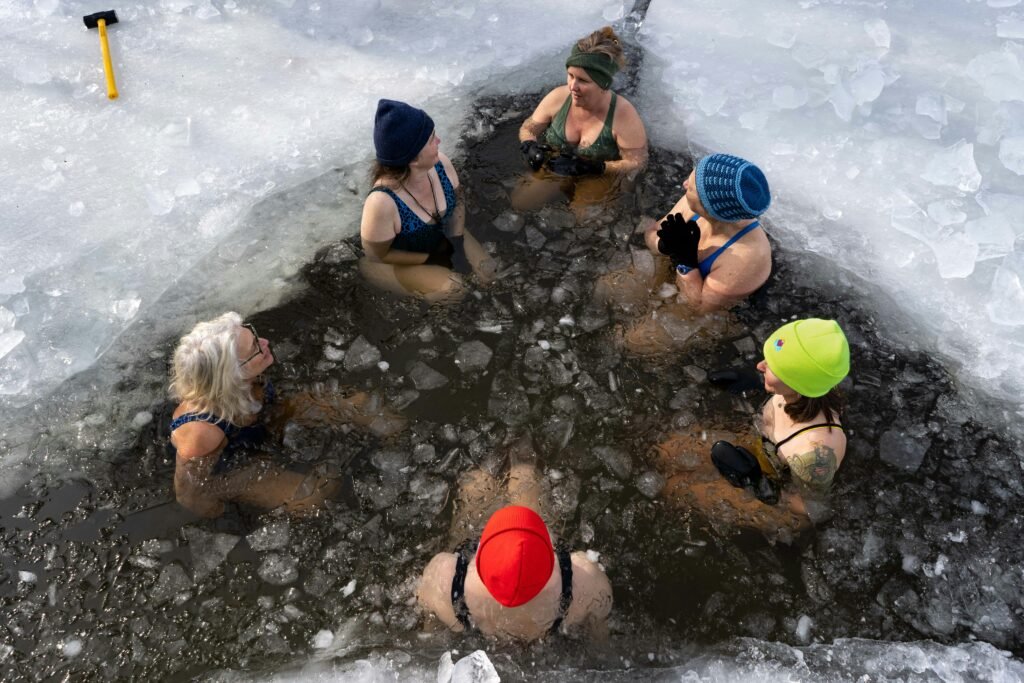Have you ever thought about how invigorating a cold plunge can be? Maybe you’ve heard about the health benefits associated with ice baths or cold exposure, and you’re curious about creating your own DIY cold plunge setup. But before you rush out to buy a ton of ice, there are some important do’s and don’ts to keep in mind. Let’s break down everything you need to know to safely enjoy the chilling yet revitalizing experience of a cold plunge.

The Basics of a Cold Plunge
Cold plunges are gaining popularity, partly thanks to their purported health benefits such as improved recovery, reduced inflammation, and enhanced mental clarity. The core idea is that temporarily exposing your body to cold water—or in this case, ice—can stimulate various physiological responses that many swear by.
Understanding Ice’s Role
When you think of a cold plunge, ice automatically comes to mind. But it’s crucial to understand how ice interacts with water and your body. Ice cools the water rapidly, ensuring it reaches the ideal low temperatures for maximized benefits. However, the misuse of ice can lead to discomfort or even injury. So, knowing how much ice to use and when to use it can make all the difference.
Do’s for Using Ice in a DIY Cold Plunge
Using ice in your DIY cold plunge doesn’t have to be a daunting task. Here are some do’s to help you create the best experience.
Do Prepare Your Water
Before even thinking about ice, make sure your water source is clean and suitable for plunging. If you’re using a bathtub, fill it with cold water first. Having a baseline temperature helps maximize the chilling effect of the ice you’ll add later.
-
Choose the Right Container
Opt for a container that can hold enough water for you to submerge comfortably. Bathtubs, large plastic bins, or even kiddie pools can work great. -
Temperature Matters
The idea is to get your water down to around 50°F (about 10°C) or colder. Pre-cooling the water can save you ice later; a tap water temperature of around 60°F (15.5°C) will require less ice to reach optimal plunging temperatures.
Do Use Clean, Food-Grade Ice
It’s essential to ensure the ice you use is safe. Not all ice is created equal. If your ice is made from tap water, make sure your tap water is clean. Consider using ice from a trusted source or making your own in clean containers.
- Use filtered water if you’re making ice yourself. This minimizes contaminants and keeps your cold plunge refreshing.
Do Monitor Your Body’s Response
When you first take the plunge, start slow and monitor how your body reacts. It’s perfectly normal to feel a shock at first, but you should be able to adapt within a few minutes.
- Listen to your body— if you start feeling lightheaded or excessively cold, it’s time to get out. You can always try shorter sessions and gradually increase your time as your body acclimatizes.
Do Control the Ice Amount
Start with a moderate amount of ice and adjust based on your comfort level and temperature preferences. Typically, about 20 to 40 pounds of ice is a good starting point for a bathtub-sized cold plunge.
| Container Size | Amount of Ice (approx.) |
|---|---|
| Bathtub | 20-40 lbs |
| Plastic bin | 10-20 lbs |
| Kiddie pool | 40-60 lbs |
Do Incorporate Breathing Techniques
Breathing techniques can significantly help you manage the shock of cold exposure. Techniques like the Wim Hof Method can guide you through your cold plunge. Focus on slow, deep breaths, inhaling through your nose and exhaling through your mouth.
By synchronizing your breathing with the cold exposure, you’ll not only feel more in control but may also discover it enhances the relaxation response your body has to the cold.
Don’ts for Using Ice in a DIY Cold Plunge
Now that you know what to do, here are the don’ts to avoid in your cold plunge experience.
Don’t Stay in Too Long
While cold plunging brings benefits, staying in for too long can lead to hypothermia or other adverse effects. Generally, aim for 5 to 10 minutes as a starting point. You can work on extending this time only after you feel comfortable with the cold exposure.
- Be cautious— if you start shivering, that’s your body telling you it’s time to exit.
Don’t Skip the Preparation
Preparation is key when it comes to taking the plunge. Skipping this step can lead to a disappointing or even unsafe experience. Make sure your setup is reliable and fully ready before you start.
-
Have a plan for warmth post-plunge. Have towels, warm clothes, or a hot drink ready for after your session. This helps maintain your comfort and prevents shock to your system after the cold exposure.
-
Timing is everything. Don’t jump in right after an intense workout; allow your body some time to cool down first. This can help you manage the abrupt temperature change more effectively.
Don’t Neglect Hydration
Hydration often gets overlooked, but it plays a crucial role in your overall experience. Cold exposure can be taxing, and staying hydrated can improve your resilience to the cold.
- Make it a habit to drink water before and after your session.
Don’t Use Too Much Ice
Using an excessive amount of ice can create a dangerously low temperature in your cold plunge. While it might be tempting to dump in as much ice as you can for the ultimate chill, too much ice can make the water unbearable and unsafe.
- Find the right balance. Gauge the temperature regularly as you add ice, aiming to find that sweet spot that’s cold enough to get the benefits but not so cold that it feels like torture.
Don’t Ignore Safety Precautions
When you’re dealing with ice and cold water, safety should be a priority. Here are some key safety measures to consider:
- Have someone nearby, especially if you’re new to cold plunging. This ensures assistance is available in case you feel unwell.
Advanced Tips for Your Cold Plunge
You might be wondering how to level up your cold plunge experience. Here are some advanced tips to elevate your cooldown ritual.
Try Adding Epsom Salt
Epsom salt can enhance the clarity of your water, and the magnesium found in the salt may further ease your muscles post-plunge. Plus, it adds an element of self-care to your routine.
- Just be mindful, adding too much salt can alter your water chemistry, making it less pleasant. Just a cup or two should suffice.
Experiment with Additives
Want to spice things up? Consider adding essential oils for aroma, or even herbs for a spa-like experience. Just be sure to choose skin-safe options.
- Choose calming scents like lavender to promote relaxation or eucalyptus for a refreshing experience.
Control Your Environment
The surroundings can greatly affect your cold plunge experience. If you want to amplify the effect, set up your DIY cold plunge outdoors in a natural setting— but be cautious of the elements.
- Create a serene atmosphere with calming music or soft lighting, which can help you mentally prepare for your cold plunge.

The Bottom Line
Implementing these do’s and don’ts in your DIY cold plunge journey can significantly enhance your experience and bring you closer to understanding your body’s limits. As you embark on this challenge, remember that everyone’s tolerance differs. What works for you might not work for someone else.
Use this article as a guide to find your best cold plunge methodology, and above all, have fun with it!
As you venture deeper into the world of cold plunging, don’t hesitate to tweak and refine your approach. After all, this is about you—how you feel, how you recover, and how alive you become with each icy dip.
Chilling out has never felt so good!

